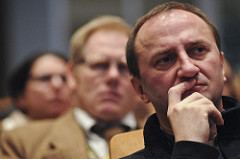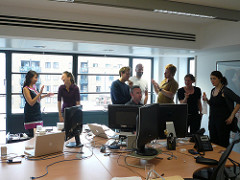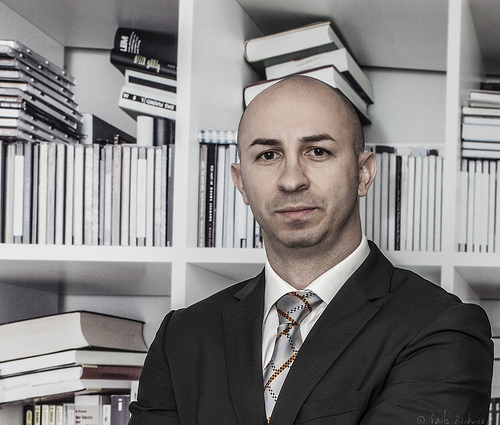Business leaders sometimes have a compulsion to be decisive–to just do something!
Sometimes, though, it’s best to wait. More often than many think, waiting can be a good business strategy, if we learn when to make that choice wisely. But when is that?
When there is not a compelling reason to act
 Sometimes, we have to slow down to speed up.
Sometimes, we have to slow down to speed up.
Making a bad decision, just because we feel the need to be aggressive, can set a company back or take it in the wrong direction. What we originally felt was decisiveness turns out to be impulsive ego. Before we make important choices, it’s better to ask, “Is this the right time to make this decision?”
“Whenever there’s a decision that needs to be made, the first thing you ask yourself is ‘When does this decision need to be made?’ and you don’t make it until then.” (from “How to Be More Creative: Think Less” by Jessica Stillman)
When the situation does not involve a key priority
A good leader should be measured less by the number of decisions they make than by which ones they choose to engage in. Business expertise can be expressed by choosing to not do something.
Consider the idea of “executive neglect,” a conscious decision to not spend time on something.
We can make this choice for small things, such as emails or tasks, or for larger issues or projects. The advantage of executive neglect is that it allows us to focus on the things that are most important.
In other words, we make better progress by not doing some things.
“If you decide prematurely, … it stops you giving yourself the time to collect more information, to listen to more hunches, to allow more creative ideas to bubble up into your mind. If you deprive yourself of that, that’s not being smart. That’s merely being macho.” (from “How to Be More Creative: Think Less” by Jessica Stillman)
When we know in our heart there is a bad choice
 Some situations should be easy for us to decide not to act, such as when they:
Some situations should be easy for us to decide not to act, such as when they:
- Cause harm to someone, whether or not we think that person deserves it.
- Are counter to God’s wisdom, such as what we find in the Bible.
- Involve questionable morals or shady legality.
“We assume that everything in life can be made better by taking action, but sometimes it just isn’t so.” (from “Seven Spiritual Gifts of Waiting” by Holly W. Whitcomb)
When our motives may not be healthy
The first of the five STEPS is called Surrender and is defined as: “Surrender your will to God and make choices based on faith and courage.”
We often leave God in church and forget to bring him to work with us.
We separate our life into artificial compartments of “spiritual” and “secular.” In God’s marketplace, there is no such division, and he wants to be engaged in our business life. We should seek his direction in all areas, even those that don’t seem “spiritual” at all.
The second of the STEPS is Transformation, which is to: “Humbly admit your mistakes and make positive changes in your life.” Business people are, after all, just people. They may suffer from compulsivity, even addiction, at work just as they can in other areas of their lives. And the top addictions for leaders are pride and control.
When we set those unhealthy motivations aside, we can better find the wisdom and courage to do the right thing, even when that is to wait.
“Waiting is not easy. But often, far too often, we are … urged on by our own frail and fractured nature which often does not see things correctly. We do things in our own power rather than waiting for God’s word to us.” (from “Waiting: An Essential of the Spiritual Life” by Joseph Atkinson)
We have a higher authority we should involve in our business decisions. God is our real CEO, and it is our job to talk to the boss before we make key decisions.
And to use his help to develop the strategy of waiting.
Question: Do you feel confident enough to develop a strategy of waiting.
Action: Pick one decision in your business where you will choose to wait.
Photo by U.S. Naval War College  Photo by Lars Plougmann
Photo by Lars Plougmann  Photo by serzhile
Photo by serzhile 

